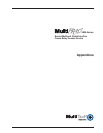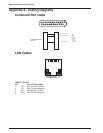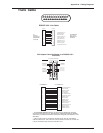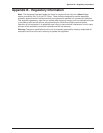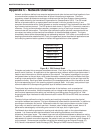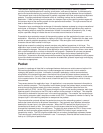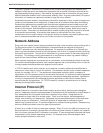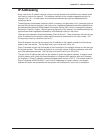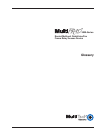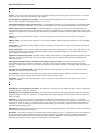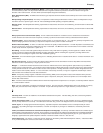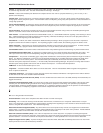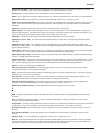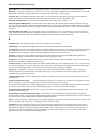
79
Appendix C - Network Overview
IP Addressing
Every node on an IP network requires a 4-byte numeric address that identifies both a network and a
local host or node on the network. This address is written as four numbers separated by dots, for
example, 148.1.9.1. In most cases, the network administrator sets up these addresses when
installing a device.
The assignment of addresses is arbitrary within a company or organization, but if a company plans to
connect with the Internet anytime in the near future, a registered addresses should be obtained from
the Defense Data Network (DDN) Network Information Center (NIC), which is managed by Network
Solutions in Chantilly, Virginia. With the growing popularity of the Internet, it is recommended that all
organizations obtain registered addresses to avoid address conflicts in the future.
There are three classes of Internet addresses; Class A, B and C. Class A networks use the first byte
of the IP address for the network number and the remaining three bytes for the host number. The
first byte may have any value from one to 127.
Class B networks use the first two bytes of the IP address for the network number and the last two
bytes for the host number. The first byte must have a value from 128 to 191.
Class C networks use the first three bytes of the IP address for the network number and the last byte
for the host number. This scheme provides for a very large number of different networks, each with
up to 255 addressable devices. The first byte must have a value from 192 to 223.
The part of the IP address that refers to the network is called the network address. A network mask
is the bit pattern which yields the network address in a Boolean AND operation with the IP address.
For example, in Class C networks, network addresses take the form X.X.X.0. The network mask for
Class C networks is 255.255.255.0. In all of the IP addresses on a given network, the network
address will remain the same while the host portion will be different for each host or workstation.



